VDNKh Park, the All-Russian Exhibition Centre, is the largest exhibition, museum, and recreational complex in the world. It was designed to display the success and potential of the Soviet agricultural industry, and remains today a monument of Soviet architecture, culture and history. Today, VDNKh is the site for Russian and international exhibitions, and cultural and business events, which are held in its historical pavilions, palaces, and gardens. Thirty-three million people visit VDNKh Park every year, making it one of Moscow’s most popular landmarks.
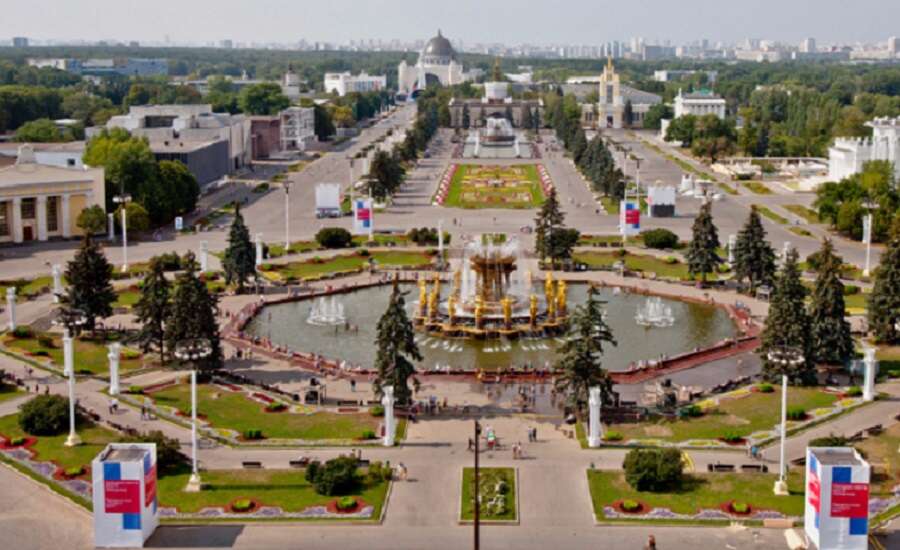
Photo by mos.ru on Wikipedia
VDNKh Park’s history dates back to 1927, when the Congress of the All-Union Communist Party made the decision to collectivise the agricultural sector of the Soviet Union. This was a radical change which would amalgamate all individual farms into collective farms, to drive the rapid industrialisation of the USSR and reduce the power of wealthier peasants. As collectivisation was violently opposed by the peasants, and caused a catastrophic famine in Ukraine from 1932-33, it was necessary for the Soviet government to showcase the successes of the collective farm, and create a positive feeling towards Soviet agricultural policy. This would take place in the form of the All-Union Agricultural Exhibition.
Bringing the exhibition to life was a true feat worked on by two thousand artists, architects and designers, who could show off their talent on a monumental scale. The exhibition was so large that it required town planning to design. The All-Union Agricultural Exhibition opened on 1st August 1939. It was not just an exhibition but an ideological tool, displaying the successes of the USSR and modelling what the socialist future could be. Aside from 32 pavilions showcasing different elements of industry, there were palaces for each of the Soviet republics and regions, with unique designs to reflect their culture.
Did you know? 3.5 million people visited the exhibition in the first three months!
The exhibition was revived in the post-war period to demonstrate the successful recovery of the USSR, and opened on 25th June 1954. Its territory was expanded and many attractions were added, including fountains and a huge triumphal arch at the entrance. The Thaw period following the death of Stalin saw increasing criticism of the extravagance of the park, as Khrushchev opposed the excesses of Stalinist architecture. Nevertheless, under Khrushchev the decision was made to unite the All-Union Agricultural Exhibition with the Industrial and Construction Exhibitions located elsewhere in Moscow. The Exhibition of Achievements of the National Economy of the USSR was born – now known as VDNKh. The site of VDNKh Park was once again grew, and its exhibition activities were year-round, hosting increasingly impressive Russian and also foreign exhibitions, a rarity in the USSR.
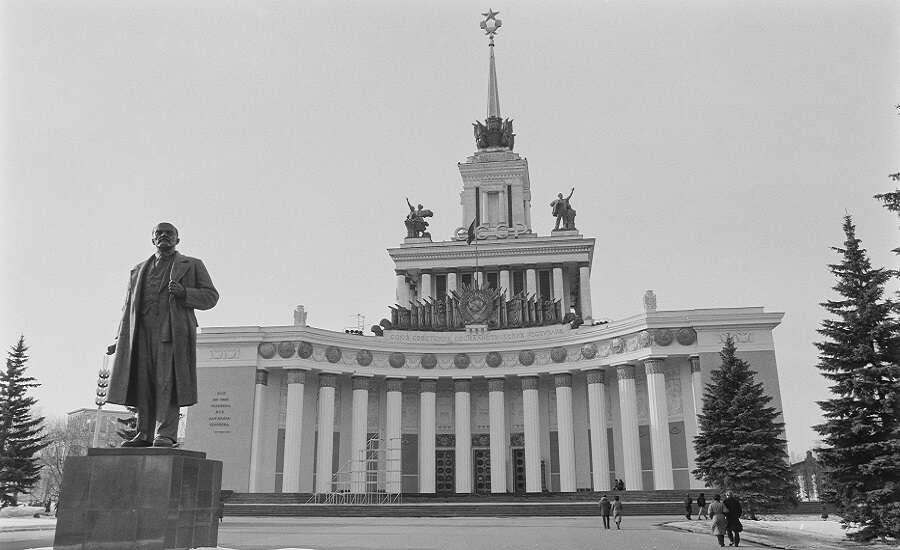
Photo by Steve Harvey on Unsplash
Did you know? The triumphal arch at the entrance to VDNKh was modelled on the Brandenburg Gate in Berlin.
Deprived of state funding following the collapse of the Soviet Union, VDNKh suffered. The administration began renting the pavilions to other organisations, who did not treat the premises with respect. Many of the precious Soviet-era exhibitions, a window into another time, were lost, destroyed in order to maximise space for business, and replaced by flea-markets, warehouses, or cheap cafes. By the mid-2000s, the original concept of VDNKh was unrecognisable, there were no exhibitions, and the park resembled a huge shopping centre.
Did you know? During this period, VDNKh was known as the ‘All-Russian Kebab House’.
Domestic and international exhibition activities finally resumed in 2009, and following the transfer of VDNKh to the Moscow government in 2013, restoration was underway. The museum, exhibition, and recreational activities of VDNKh Park came back to life.
Today, the park is once again known by its Khrushchev-era name, VDNKh – Vystavka dostizheniy narodnogo khozyaystva – ‘Exhibition of the Achievements of the National Economy’. VDNKh Park is divided into six main zones.
Did you know? The territory of VDNKh Park is the size of nearly 444 football fields, and is larger than Monaco. Statistics say that you would need four hours at VDNKh to catch just a quick glimpse of everything, and 8 hours for a leisurely walk – you can also rent a bicycle to explore this vast site!
This is the main section of VDNKh. Around the squares and along the central path are the palaces and pavilions of the former Soviet republics and main industries of the USSR, some of which house exhibitions and museums. Ten architectural landmarks, museums and exhibitions are:
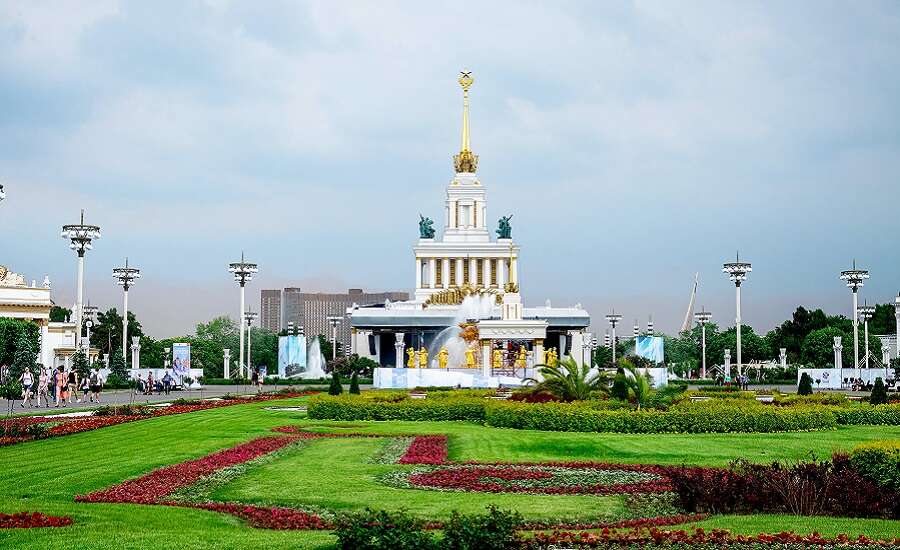
Photo by Artem Beliaikin on Unsplash
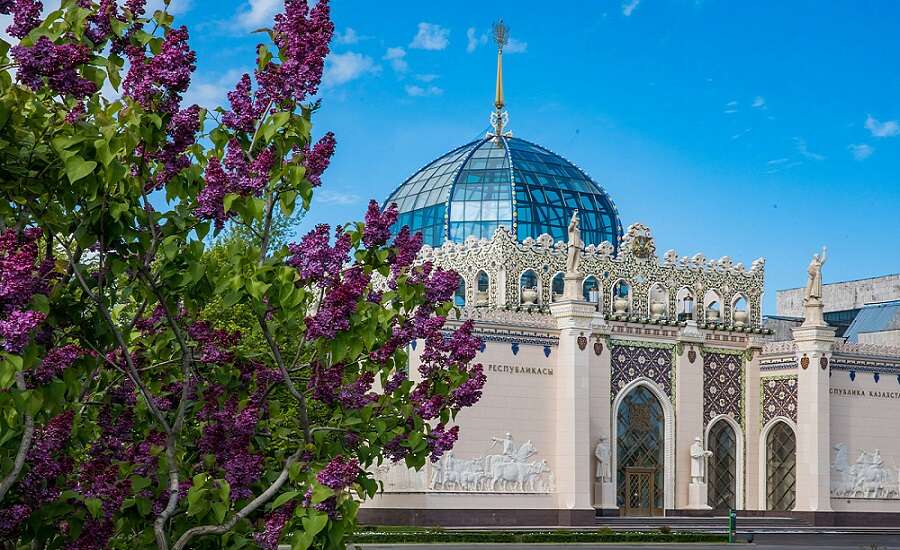
Photo on vdnh.ru
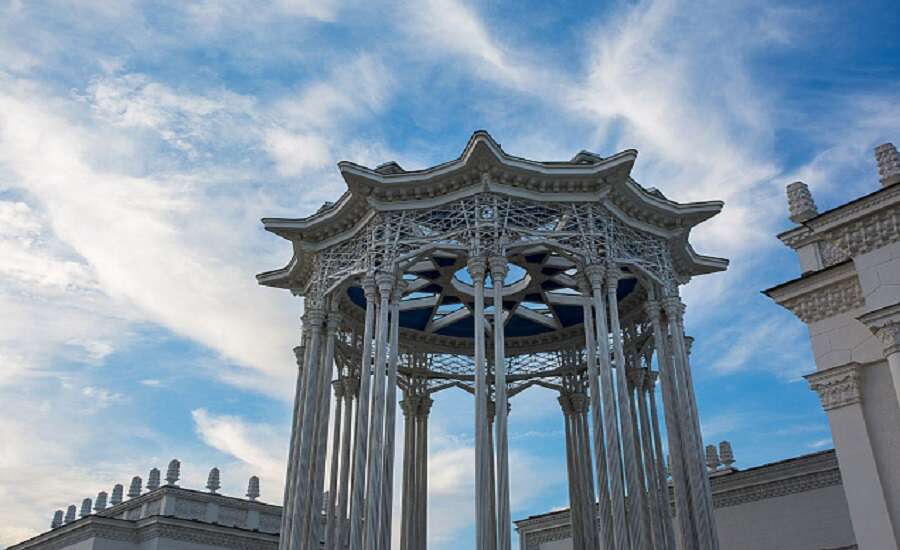
Photo on vdnh.ru
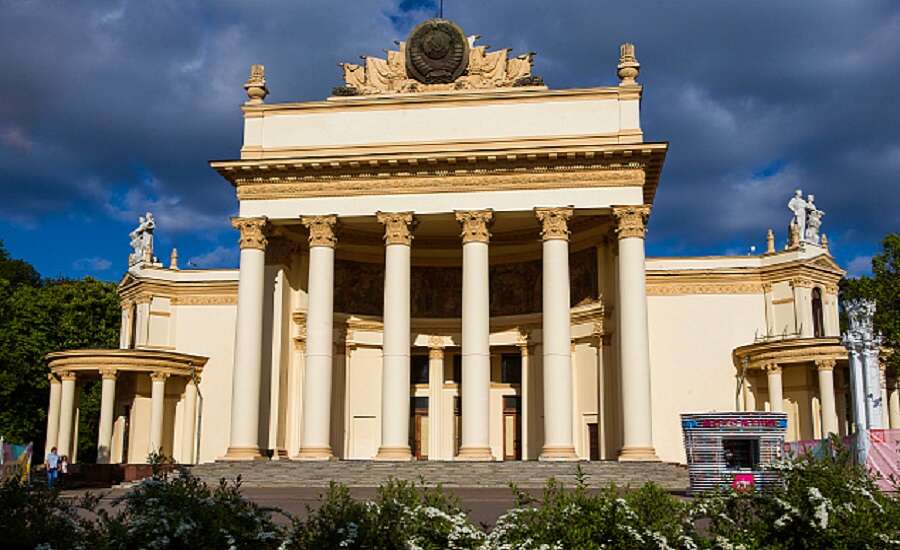
Photo on vdnh.ru
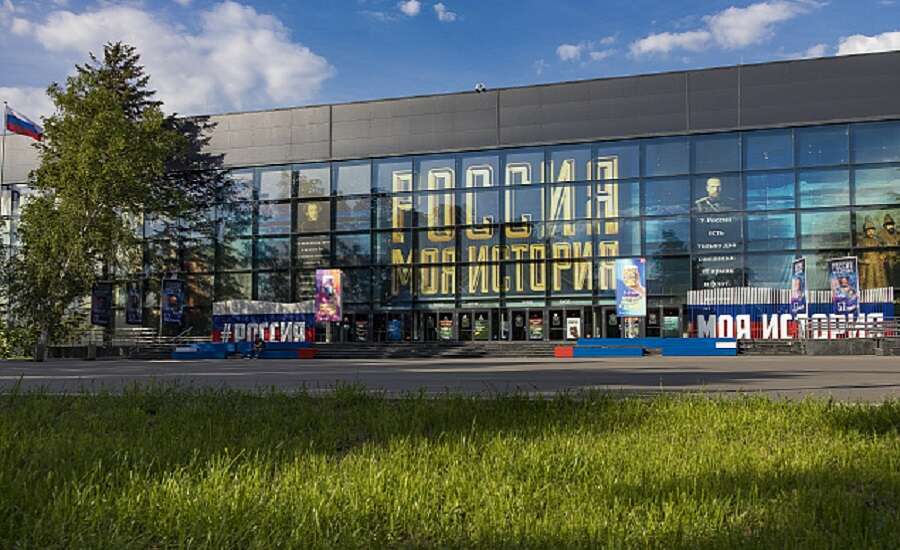
Photo on vdnh.ru
Did you know? The sculpture Worker and Collective Farm Woman, created by Vera Mukhina for the 1937 World Fair in Paris, crowns the Constructivist pavilion just outside VDNKh. It is one of the most remarkable symbols of Soviet Russia, and with the pavilion as its pedestal, the statue reaches 60 metres into the sky.
Park of Knowledge is an educational cluster where visitors can take courses, masterclasses and workshops, and use state-of-the-art facilities. The main zone is called Tekhnograd, which has been characterised as a ‘supermarket of professions’. The Tekhnograd complex comprises 5 different sections: visit Service to perfect your culinary skills; Art to study the creative professions; Tsifra to join workshops and courses in the digital industry; Urban for construction and urban professions; and Prom to learn from engineers, mechanics, and designers.
The Landscape Park is a unique eco-project that extends around the west and north sides of VDNKh Park. There are many walking and cycling paths and areas for outdoor activities, and lots of attractions. These include the Oak Grove – the best-preserved oak forest in Moscow region, which is also home to an eco-trail high up in the trees – the Green Maze, flower fields, lilac garden, a beach with sun loungers and water playgrounds, and the Ecosystem Exhibition with plants of specific habitats. The Golden Ear fountain, shaped as an ear of wheat, is the compositional centre of the Landscape Park. As well as this, there are several beautiful gardens in and around the central alley, including a rose garden, chestnut tree grove, and ornamental flower gardens.
Did you know? Near the beach, you will find the Museum of Cinema located in Pavilion No.36, which chronicles a century of Russian and Soviet Cinema.
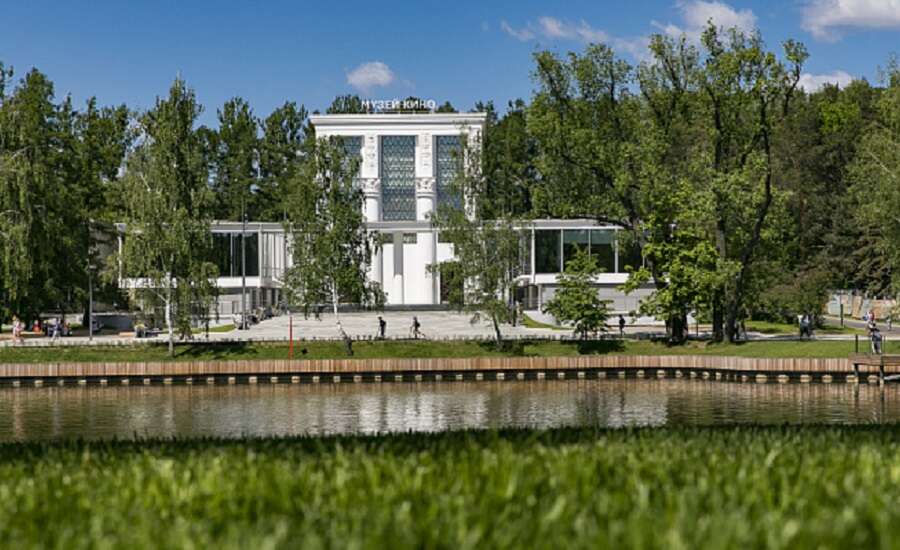
Photo on vdnh.ru
This area is dedicated to arts and crafts. The main venue, House of Crafts, is located in Pavilion No.47 where the pig breeding exhibition used to be. Visitors can join masterclasses and workshops led by experts and purchase a unique souvenir to take home. Just some of the crafts you can admire and get involved in include furniture making, cosmetics, glass blowing and glass painting, cheesemaking, sweet making, ceramics, carpentry, floristry, and embroidery. In the summer, fairs and festivals are held here. The Park of Crafts is also home to a city farm and fishing village which organises events and educational experiences.
Did you know? You can even get married at VDNKh Park! The wedding palace is located in building No.421, near the Park of Crafts. Alternatively, you can have your ceremony in VDNKh’s church, the Chapel of St Basil.
Sections of VDNKh in the making are EXPO, a huge multifunctional event, exhibition and congress venue, and the Park of the Future, an all-season amusement park whose construction team includes the company who built Disneyland Paris and the designer of the Sochi Winter Olympics Opening Ceremony. Both sections should be opening next year.
Essential information for visitors
Address and contact details
VDNKh, Estate 119, Prospect Mira, Moscow, 129223
Website: https://old.vdnh.ru/en/
Email: info@vdnh.ru
Telephone: +7 (495) 544-34-00
Nearest metro: Vystavochny Tsentr (350m to main entrance), Botanicheskiy Sad (710m walk through Leonovskaya Grove to north-eastern side entrance)
Opening hours and tickets
Open 24/7
Entry to VDNKh Park is free!
Join us on Facebook
We invite you to become a fan of our company on Facebook and read Russian news and travel stories. To become a fan, click here.
Join our own Russian Travel, Culture and Literature Club on Facebook. The club was created to be a place for everyone with an interest in Russia to get to know each other and share experiences, stories, pictures and advice. To join our club, please follow this link.